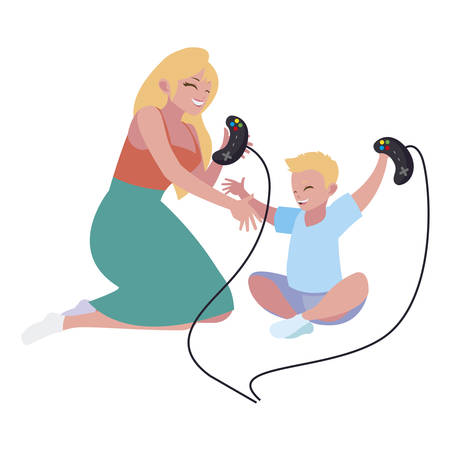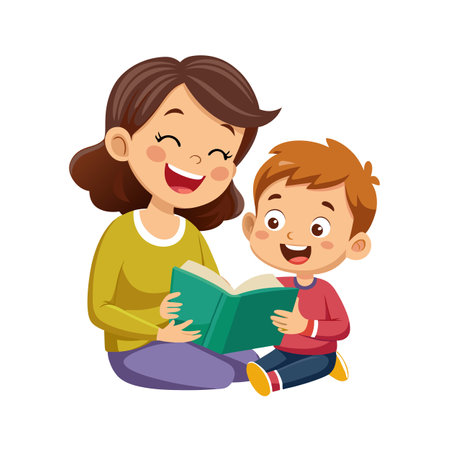The Growing Trend of Bilingualism in America
In recent years, the number of multilingual households in the United States has been on a steady rise. Walking through neighborhoods or school hallways, its no longer unusual to hear children effortlessly switching between English and Spanish, Mandarin, Tagalog, or any number of other languages. This shift reflects not only increased immigration but also a growing appreciation for cultural diversity and the many advantages it brings. American families are embracing their heritage languages or introducing new ones into their homes, motivated by the desire to give their children a broader worldview and competitive edge. As our communities become more culturally rich and interconnected, bilingualism is transforming from a rare asset into an everyday reality—reshaping how we think about parenting and education in today’s multicultural America.
Key Benefits of Raising a Bilingual or Multilingual Child
When it comes to raising bilingual or multilingual children in the U.S., the advantages go far beyond just being able to order from different menus when traveling. Let’s dive into the powerful benefits—cognitive, academic, and social—that your child can gain by growing up in a home where more than one language is spoken.
Cognitive Advantages: Sharper Minds
One of the most compelling reasons for raising bilingual babies is the boost it gives their brains. Research consistently shows that children exposed to multiple languages have better problem-solving skills, enhanced memory, and greater mental flexibility. These cognitive perks come from constantly switching between languages, which exercises the brain like a mental gym.
| Cognitive Benefit | Description |
|---|---|
| Problem-Solving | Bilingual children often find creative solutions faster due to frequent language switching. |
| Focus & Attention | They excel at filtering out distractions and focusing on tasks. |
| Mental Flexibility | Switching between languages helps them adapt quickly to new situations. |
Academic Advantages: A Leg Up in School
Kids who grow up multilingual don’t just flex their brains—they often perform better academically. Studies suggest they’re more adept at reading comprehension, have stronger vocabulary skills, and may even score higher on standardized tests. Plus, learning multiple languages early on can make picking up additional ones later in life much easier—a real bonus in our globalized world.
Academic Benefits at a Glance:
- Reading Skills: Early exposure to different alphabets and sounds primes kids for literacy success.
- Standardized Test Performance: Bilingual students often outperform monolingual peers in language-based assessments.
- Future Learning: Multilingual kids are typically quicker to learn new languages as they grow older.
Social Advantages: Bridging Cultures and Building Empathy
Bilingualism isn’t just about speaking more words—it’s about connecting with more people. Children raised with more than one language naturally develop cross-cultural understanding and empathy. They can communicate with extended family, make friends across cultural lines, and feel a sense of pride in their heritage. In America’s beautifully diverse society, these skills help them thrive socially and emotionally.
Summary Table: Core Benefits of Raising Bilingual/Multilingual Children
| Type of Benefit | Impact on Child’s Development |
|---|---|
| Cognitive | Mental flexibility, better focus, strong problem-solving abilities |
| Academic | Advanced reading skills, stronger vocabulary, improved test scores |
| Social/Emotional | Cultural empathy, broader communication network, boosted confidence and pride in identity |
The journey to bilingualism isn’t always easy—but these benefits show why so many American families are embracing it wholeheartedly.

3. Common Challenges Parents Face
Raising bilingual or multilingual children in the United States is a rewarding journey, but it’s not without its hurdles. Many American parents find themselves navigating a maze of real-life challenges as they nurture their child’s language skills. One of the most common concerns is language mixing—when children blend words or grammar from both languages in a single sentence. While this is a natural phase for young learners and usually resolves over time, it can worry parents who fear their child isn’t fully mastering either language.
Another major hurdle is finding strong support systems. In some communities, resources like bilingual preschools, playgroups, or cultural organizations may be limited. Parents often feel isolated if their friends or family don’t understand the value of raising a multilingual child, or if they face pressure to “just stick to English.” This can make it challenging to maintain consistency and motivation, especially when one language is less commonly spoken at home or in the broader community.
Concerns about delayed speech are also prevalent among American families. It’s normal for bilingual children to start speaking slightly later than their monolingual peers, but this can cause anxiety—especially when well-meaning relatives or even pediatricians question whether learning multiple languages is “too much” for a young brain. As someone who has walked this path, I know how important it is to trust the process and seek guidance from professionals experienced with bilingual development.
Despite these obstacles, many parents discover creative solutions: connecting with other multilingual families online, joining community centers that celebrate diverse cultures, or advocating for dual-language programs at local schools. By sharing experiences and supporting one another, American families can turn these challenges into stepping stones on the path toward raising confident and capable bilingual kids.
4. Practical Tips for Fostering Bilingualism at Home
Helping your child grow up bilingual may sound overwhelming, but with a few practical strategies and consistent routines, it can become a natural part of your family’s daily life. Here are some actionable tips and resources that many American parents have found helpful in promoting language learning at home.
Create Consistent Language Routines
Children thrive on routine, and this is especially true when learning more than one language. Try to designate specific times or activities for each language. For example:
| Routine | Language Example |
|---|---|
| Bedtime stories | Spanish books every night |
| Mealtime conversations | Only English during breakfast |
| Saturday morning cartoons | French-language shows |
| Sunday calls with grandparents | Your heritage language only |
Leverage Everyday Opportunities for Practice
You don’t need fancy programs to encourage bilingualism—just make the most of daily moments. Label household items in both languages, sing songs together, or play simple games like “I Spy” while grocery shopping. The key is exposure and repetition in real-life contexts.
Use Technology Wisely
There are fantastic apps and online resources designed for American families raising bilingual kids. Some parent favorites include:
- DuoLingo Kids: Fun, gamified language practice.
- PBS Kids bilingual shows: Educational content in Spanish and English.
- Audiobooks and podcasts: Listen during car rides or quiet time.
Connect with Community Resources
Don’t underestimate the value of local support. Many libraries offer bilingual story times, and community centers may host cultural events or language classes. Connecting with other multilingual families can also provide encouragement and extra practice opportunities for your child.
Your Commitment Makes the Difference
The most important resource in your child’s bilingual journey is you. Even if you’re not fluent, showing genuine interest, celebrating small milestones, and staying patient through mistakes will help your child feel confident and motivated to keep learning.
5. Building Community: Schools, Support, and Cultural Connections
One of the most rewarding aspects of raising a bilingual or multilingual child in the U.S. is discovering the vibrant communities and support systems that exist—if you know where to look. While navigating this journey might feel isolating at first, building a strong network can make all the difference for both parents and children.
Finding Language Programs
Seek out local language immersion programs or after-school classes. Many cities have public or private schools offering dual-language curriculums, ranging from Spanish-English to Mandarin-English and more. Community centers, libraries, and even some daycare providers host storytimes or playgroups in different languages. These programs not only reinforce language skills but also give children the chance to see their language as something valued outside the home.
Connecting with Cultural Communities
Get involved in cultural organizations, festivals, and heritage groups. Whether it’s joining a Vietnamese New Year celebration or participating in a French-language meetup, these experiences help your child connect language with culture and community pride. Don’t hesitate to reach out on social media; Facebook groups, local forums, and apps like Meetup often list events for families looking to celebrate their cultural heritage together.
Advocating at School
If your child attends an English-only school, become an advocate for multilingualism. Talk to teachers about incorporating diverse books, music, or traditions into classroom activities. Suggest family culture nights or invite guest speakers from various backgrounds. Sometimes, all it takes is one parent’s initiative to spark greater awareness and appreciation for diversity throughout the school community.
The Power of Shared Experience
Above all, remember you’re not alone in this journey. Sharing stories with other parents who are raising bilingual children—whether online or over coffee—can provide invaluable encouragement. Building a network isn’t just about resources; it’s about forming friendships rooted in shared values and dreams for our kids’ futures.
6. Stories from American Families Raising Multilingual Kids
Real-life experiences bring the journey of raising bilingual babies to life, showing both its joys and unique challenges. Here are a few heartfelt stories from American families navigating this path:
The Joy of Connection: The Hernandez Family (Spanish-English)
Maria Hernandez, a second-generation Mexican American mom from Texas, shares, “Hearing my daughter switch effortlessly between English at school and Spanish with her abuela fills me with pride. She gets to connect deeply with our roots—her face just lights up when she understands family stories told in Spanish.”
Finding Community: The Patel Family (Gujarati-English)
Ravi Patel from New Jersey admits it wasn’t always easy: “Sometimes my son resisted speaking Gujarati at home because none of his friends did. But attending community events where he met other kids like him made a huge difference. Now, he values being able to talk with his grandparents and cousins in India.”
Navigating School Challenges: The Kim Family (Korean-English)
Grace Kim, a teacher in Los Angeles, recalls, “When my daughter started kindergarten, her teacher worried about her mixing languages. But within months, she not only kept up but began helping classmates learn Korean words too. It’s given her confidence and new friendships.”
A Journey Worth Taking: The Smith-Deschamps Family (French-English)
For Nicole Smith-Deschamps from Chicago, keeping French alive was about honoring her husband’s heritage. “There were days we felt unsure—especially when our son mixed languages or seemed frustrated. But hearing him sing French songs with his dad is proof that the effort pays off. We’re giving him the gift of two worlds.”
These stories reflect the diverse tapestry of American families raising multilingual children. While each experience is unique, what unites them is the love, patience, and hope for a future where their children can confidently embrace every part of who they are.


